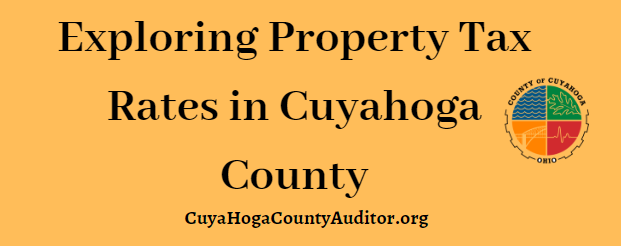Property taxes are a reality for homeowners across the United States, and understanding how they are assessed and what rates apply to your property is essential for financial planning. In Cuyahoga County, Ohio, property tax rates can vary based on a variety of factors, including the assessed value of your property and local tax rates. In this article, we will explore property tax rates in Cuyahoga County, providing insight into how they are calculated, what factors influence them, and how homeowners can navigate the system effectively.
Understanding Property Tax Rates
Property tax rates are determined by local governments and are used to generate revenue to fund various public services, such as schools, infrastructure, and emergency services. These rates are typically expressed as a percentage of the assessed value of a property. In Cuyahoga County, property tax rates can vary depending on the municipality in which the property is located.
Factors Influencing Property Tax Rates
Several factors can influence property tax rates in Cuyahoga County, including:
- Local Government Budgets: The amount of revenue needed to fund local government operations can impact property tax rates.
- Property Assessments: The assessed value of a property, as determined by the county auditor’s office, plays a significant role in calculating property tax bills.
- Tax Levies: Voter-approved tax levies for specific purposes, such as school funding or infrastructure projects, can affect property tax rates in certain areas.
How Property Tax Rates Are Calculated
In Cuyahoga County, property tax rates are calculated by dividing the total revenue needed by the total assessed value of all taxable properties within a municipality. This calculation results in a millage rate, which represents the amount of tax owed per $1,000 of assessed property value. For example, a property with an assessed value of $100,000 and a millage rate of 100 would owe $10,000 in property taxes annually.
Understanding Millage Rates
Millage rates are expressed in “mills,” with one mill equal to one-tenth of one percent (0.001). For example, a millage rate of 100 would be equivalent to a tax rate of 10%.
Variations in Property Tax Rates
Property tax rates can vary widely across Cuyahoga County, with some municipalities having higher rates than others. Factors such as the quality of schools, access to amenities, and demand for housing can all influence property tax rates in a given area.
Homestead Exemptions
Homeowners in Ohio may be eligible for a homestead exemption, which reduces the taxable value of their property for the purpose of calculating property taxes. This exemption can result in significant savings for eligible homeowners.
Navigating Property Tax Rates in Cuyahoga County
Understanding property tax rates and how they are calculated is essential for homeowners in Cuyahoga County. To effectively navigate the property tax system, homeowners should:
- Stay Informed: Keep track of changes to local tax rates and assessments.
- Appeal Assessments: If you believe your property has been overvalued, consider appealing the assessment to potentially lower your tax bill.
- Take Advantage of Exemptions: Explore opportunities for exemptions or deductions, such as the homestead exemption, to reduce your property tax liability.
Conclusion
Property tax rates in Cuyahoga County can have a significant impact on homeowners’ finances. By understanding how these rates are calculated, what factors influence them, and how to navigate the system effectively, homeowners can better plan for their property tax obligations and potentially save money in the long run.
FAQs
-
How often are property tax rates updated in Cuyahoga County?
Property tax rates in Cuyahoga County can vary from year to year, depending on changes to local government budgets and other factors.
-
Are property tax rates the same for all types of properties?
Property tax rates can vary depending on the type of property and its use. Residential properties may have different tax rates than commercial or industrial properties.
-
Can property tax rates increase significantly over time?
While property tax rates can increase over time, the rate of increase is typically limited by state law to prevent sharp spikes in tax bills for homeowners.
-
Are there any programs available to help homeowners with high property tax bills?
Some municipalities offer tax relief programs for low-income or elderly homeowners to help mitigate the burden of high property tax bills.
-
How can I find out what my property tax rate is in Cuyahoga County?
You can contact the Cuyahoga County Auditor’s Office or visit their website to find information about property tax rates and assessments in your area.
